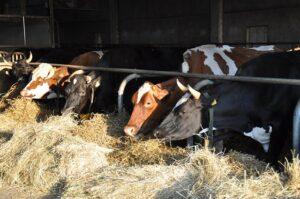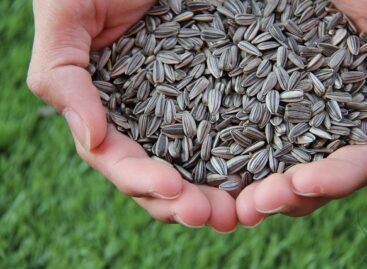At the EU level, the increase in performance of domestic livestock breeding is also outstanding
The performance of the Hungarian pig, poultry and dairy sectors increased significantly in the first half of 2024, even in comparison with the European Union, and the export rate of sheep and cattle also increased significantly.

(Photo: Pixabay)
Beneficial changes in the market environment and government assistance that maintains farmers’ liquidity and finances developments have resulted in a clearly visible increase in animal husbandry this year – stated Zsolt Feldman, the state secretary responsible for agriculture and rural development, who explained that in Hungary between January and May 2024 in terms of the number of pigs slaughtered, the increase was the 3rd highest, in the case of poultry slaughter, it was also the 3rd highest, and in the case of milk purchases, it was the 4th highest, based on EU statistical data. In the area of slaughter calculated in live weight, an increase of more than 14% can be observed in the case of poultry, and more than 8% in the case of pork slaughter. In the cattle sector, the volume of live animal exports increased significantly by nearly 12% between January and May 2024, while in the sheep sector, according to domestic statistical data, it increased by more than 25%. According to the state secretary, the more favorable economic environment for animal breeders is indicated by the fact that in several sectors – in addition to the revival of domestic and foreign consumption – purchase prices have normalized or increased, while financing costs or the price level of feed prices have also decreased in parallel.
The support of the Ministry of Agriculture greatly helps agriculture
Zsolt Feldman highlighted: the utilization of the opportunities of a more favorable market environment is significantly helped by the support system related to animal husbandry strengthened by the Ministry of Agriculture in recent years, as well as the implementation of the largest modernization program related to animal husbandry after the regime change. Since 2021, the Rural Development Program has allocated HUF 491 billion for investment by livestock farmers and support for the development and renewal of farms. The agro-environmental management program with an increased budget until the end of 2024 and the enhanced support for organic farming, or the system of interest-subsidized working capital loans, contribute to the preservation of farmer liquidity. He also pointed out that the resources intended for the development of Hungarian agriculture in the period of the Common Agricultural Policy until 2027 – together with the outstanding contribution from the national budget – will help rural development, farmers and food processors more than ever before. Livestock breeders and keepers have many new opportunities to modernize their farms or participate in animal welfare programs. There are compensatory grants that support the preservation of indigenous species and advice on their breeding, or that can be claimed for Natura 2000 areas. Currently, with a total budget of HUF 200 billion, the Ministry of Agriculture has announced two new calls for tenders related to the development of livestock farms, which can be used to implement both small and large-scale projects.
AM
Related news
European Commission to strengthen checks on agricultural products entering the EU
🎧 Hallgasd a cikket: Lejátszás Szünet Folytatás Leállítás Nyelv: Auto…
Read more >Sunflower and rapeseed seed prices have decreased
🎧 Hallgasd a cikket: Lejátszás Szünet Folytatás Leállítás Nyelv: Auto…
Read more >Farmers can count on the government in the fight against drought
🎧 Hallgasd a cikket: Lejátszás Szünet Folytatás Leállítás Nyelv: Auto…
Read more >Related news
The HORECA sector joins forces with Alimentaria+Hostelco to mark the future of hospitality
🎧 Hallgasd a cikket: Lejátszás Szünet Folytatás Leállítás Nyelv: Auto…
Read more >Challenges of the retail sector: retail has become more crisis-resistant
🎧 Hallgasd a cikket: Lejátszás Szünet Folytatás Leállítás Nyelv: Auto…
Read more >How to avoid the hassles of online shopping?
🎧 Hallgasd a cikket: Lejátszás Szünet Folytatás Leállítás Nyelv: Auto…
Read more >






